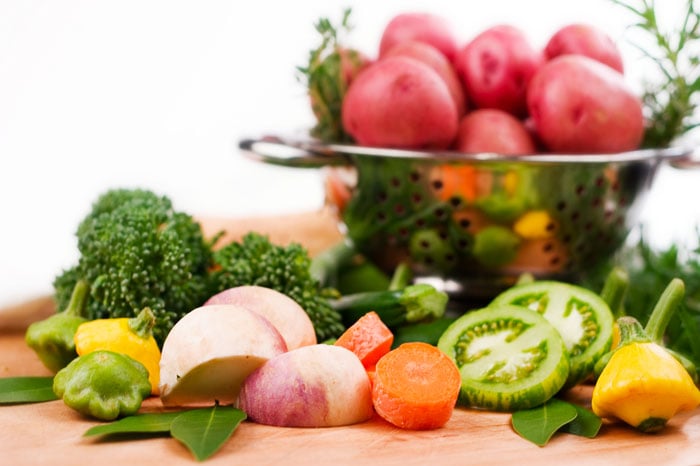
Written By: Sofia Layarda, MPH
Title: Master of Public Health
Alumni: University of California, Berkeley
Last Updated on:

Is your “vegetable repertoire” in need of a little makeover? While we all know vegetables are great for us, eating them should not be a chore. So skip that tasteless takeout salad with limp vegetables and watery dressing, and try some of these ideas (sorted by cooking style) for getting more enjoyable vegetable dishes into your kitchen.

Table of Contents
Are you into quick and easy meals? Then you must already be familiar with quick cooking methods such as stir-frying or steaming. Instead of using spinach in your stir-fry, try kale or arugula (which is also great as a topping on pizza). If you’re lucky enough to find fresh fiddleheads (they’re also available frozen), try them stir-fried with chopped shallots, prawns, and red pepper slices. For a quick warm salad, steam some asparagus and serve it tossed with sliced mushrooms in a sesame/ginger vinaigrette.
If you enjoy creating dishes “from scratch” and can afford the extra preparation time, impress your dinner guests with steaming fresh artichokes served with a squeeze of lemon juice or stuffed with a mixture of breadcrumbs, minced garlic, and Parmesan cheese. Make phyllo triangles stuffed with spinach, leeks, and feta cheese. Fans of Greek food will enjoy moussaka – a baked dish featuring eggplant with various spices, tomatoes, and a creamy topping.
You’re the envy of your friends, able to turn out exciting, tasty dishes without recipes. Instead of giving you cooking ideas, we’ll just name a few lesser-known vegetables for you to seek out and experiment with. First on the list is cardoon (sometimes called artichoke thistle), which is more likely to be found at farmers’ markets than grocery stores across the country. Look for ramp, which belongs to the Allium family of plants (like leek and onions) but tastes more like a cross between garlic and onion. Adventurous foragers have also used purslane (often considered a weed) as a vegetable for salads and soups or stews.
Everyone dusts off their barbecue in anticipation of warmer weather and longer days. But barbecuing is not the exclusive domain of carnivores; plenty of vegetables do great on the grill. Here are just some of our favorites: “coins” of beets, leeks (sliced half lengthwise), portobello mushroom caps, and eggplant (sliced and marinated with a paste made with miso, tamari sauce, and a touch of brown sugar). Tomatillos and tomatoes are great for salsas or sauces after they have spent some time on the grill.
Are you all about Southern-style comfort foods? While many of us associate Southern food with smoked or barbecued meats and ribs, we can also take inspiration from the South on the vegetable front. Okra is great steamed and served with a spicy dip, or stir-fried with chopped garlic and onions. Chayote (sometimes called mirliton in Louisiana), which looks like a “muscular” pear, is great, eaten raw (grated into salads) or cooked (baked, steamed, or boiled in soup). And don’t shy away from collard greens, which can be blanched and used as a completely vegetarian “shell” for your favorite burrito or spring roll, or in place of seaweed for making sushi.
The reality is, many of us could use more servings of vegetables in our daily noshing. But too often, vegetables are relegated to the side, as something to accompany another “main” dish (which, in our North American diet, often tends to be a meat dish). We would like to inspire you to look at vegetables with a fresh perspective; with their collective nutrition strength, they have every right to be showcased in meals. And with the range of cooking shows and recipes available through the web, trying one or two new things from the veggie world every week can be fun and tasty!
Alumni: University of California, Berkeley – Sofia believes in bringing back fun and pleasure into everyday eating. She loves cooking, and is constantly experimenting with ingredients, creating recipes and trying them out on family and friends. Her latest interest lies in finding realistic and practical ways of environmentally-friendly food/eating habits.